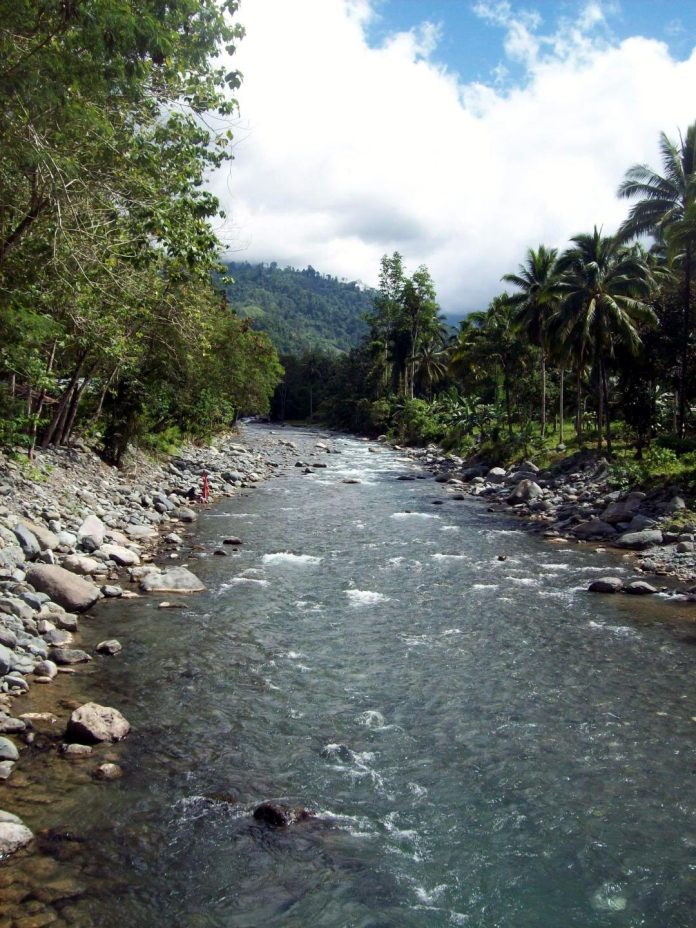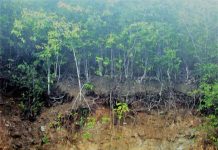Last May 10, the Davao City’s Watershed Management Council conducted an information education and communication activity in Barangay Tawan-Tawan, Baguio District, according to the City Information Office (CIO).
The objective of the activity is to protect the city’s water supply system and this could only be done by educating stakeholders on the Watershed Code and other sustainability efforts enforced by the local and national government.
The CIO said that a significant portion of Barangay Tawan-Tawan falls under critical conservation as the area hosts part of the Panigan-Tamugan Watershed. The rest of its territory is mainly classified as an agricultural zone.
From time to time, the country’s largest city in terms of land area is confronted with water issues: either there is too much water or no water at all. Both have something to do with the deterioration of watershed areas.
Davao City has eight watershed areas, including the Talomo-Lipadas watershed located in Toril District. “These watersheds are natural reservoirs for the pristine potable water that has been certified as one of the world’s cleanest drinking waters,” said the environmental group Interfacing Development Interventions for Sustainability (IDIS).
According to IDIS, one watershed that should be given urgent attention is the Panigan-Tamugan watershed as it has been classified as an Environmentally Critical Area (ECA) under the Davao City Watershed Code and a Critical Watershed Zone (CWZ) based on the Davao City Zoning Ordinance of 2018-2028.
“This classification signifies its vital role in the local ecosystem and its importance as the next source of drinking water for Davao City,” IDIS pointed out.
In August 2021, the Davao City Council passed the Ordinance Regulating Recreational Activities within the Watershed Areas of Davao City for the Protection, Conservation, and Preservation of the Natural Environment.
Section 3 (c) of Ordinance No. 0310-07 acknowledged watershed areas as recharge areas for the city’s aquifers which are essential sources of potable drinking water for the city’s population. As such, “it is imperative to safeguard, preserve, and effectively manage them to ensure the continued and full enjoyment of the present and future generations.”
Despite the existing policies on the protection of watersheds, IDIS reported that various blogs and vlogs have emerged on social media platforms, particularly Facebook, promoting prohibited recreational activities in the Panigan-Tamugan rivers.
This brought to the attention of Milky Gindon, IDIS Policy Advocacy Officer. “We need to inform the public that these are critical watershed areas, supposedly these are strict protection zones or no-go zones,” he said. “Not all nature areas are allowed for trekking and other outdoor activities. If there are too many people going to these areas, our water sources would be filled with garbage.”
The watersheds of Davao City are not the only ones facing some threats. It is true for most of the watersheds in the country.
Watersheds constitute about 75% of the total land area of the country. It has a total of 119 proclaimed and 154 priority watersheds with a total land area of 1,376,455.10 hectares and 11,690,695.00 hectares, respectively.
“The areas of proclaimed watersheds range from 20 to 180,460 hectares while the area of priority watersheds ranges from 365 to 837,149 hectares,” said Leila C. America, a research specialist of the Department of Science and Technology (DOST).
Studies conducted by the Laguna-based Philippine Council for Agriculture, Aquatic and Natural Resources Research and Development (PCAARRD) showed that most watershed areas in the country are now devoid of their forest cover. As a result, accelerated soil erosion, flash flooding, and drought have become more prevalent causing much destruction.
Davao City is not spared from deforestation. In 2020, the city lost 398 hectares of natural forest cover, according to the Global Forest Watch.
A recent gathering of environmental groups has come up with Green Agenda 2022. It urged that the city’s forest lands should be protected in accordance with the mandate of the Watershed Code.
“Davao City should ensure the protection of its existing forestland and expand these areas to achieve the ideal rate of 30% forestland versus the total land area,” said the document disseminated during the Green Agenda 2022. “Reforestation programs should utilize diversified indigenous tree species. It should also ensure to avoid illegal activities that will affect the integrity of these forests.”
Aside from providing water, trees also help minimize the impact of climate change. “Forests produce large amounts of oxygen and absorb large amounts of carbon dioxide, helping cool the Earth,” the agenda explained. “They provide us with important products including food, medicine, shelter and warmth.”
The agenda believed the Davao City Water Code “is crucial in protecting the city’s freshwater resources – groundwater from aquifers and surface water.” But they lamented the said water code has never been implemented for the past six years due to the absence of implementing rules and regulations.
“Davao is a bustling city with a population of around 1.7 million,” the agenda noted. “With its growing population, the demand for clean and accessible water supply also increases, such that policies protecting the integrity and availability of water supply are crucial.”
It is not enough to have water supply but the quality of the water as well. “There should be a stringent implementation of the Clean Water Act,” the agenda said, referring to Republic Act No. 9275 which protects water bodies from land-based sources of pollution such as industries, mining operations, agricultural works and community household activities.
Under the Clean Water Act, the designation of a water quality management area (WQMA) – which should be managed and protected – is already provided. Although Davao and Talomo Rivers already have WQMA, this does not hold true for other critical rivers in the city, including the Panigan-Tamugan.
As such, the agenda urged that WQMA should also be established in other existing rivers of the city to protect them from deterioration and other impending threats.
Water quality management is not possible if a sewerage system is not properly applied in the city. “A centralized septage and sewerage system should be established,” the agenda urged.
Earlier reports showed the Talomo-Lipadas watershed – the city’s current source of drinking water – is being threatened with increasing livestock and poultry farms along its area.
“Livestock farms that are planned to be located near the watershed areas should not be allowed as it will contaminate the source of drinking water which would eventually lead to health issues, especially among the young and vulnerable,” the agenda pointed out.
Meanwhile, as a result of the recent information drive, Tawan-Tawan Barangay Captain Ricardo Gierran said that most of his constituents are now “highly aware of the critical role Tawan-Tawan and the Tamugan River play in the city’s water supply system.”
“They have now knowledge about the do’s and don’ts of the watershed code since at the barangay level we are campaigning regularly for the protection of our natural resources,” he said.







